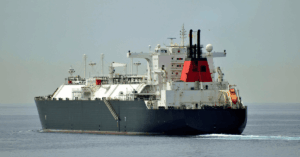
Chinese Captain Accused Of Damaging Baltic Sea Cables Appears In Hong Kong Court
July 5, 2025
Nigeria’s First Fully Indigenous Container Liner Begins Operation
July 7, 2025

India’s Oil and Natural Gas Corporation (ONGC) has partnered with Mitsui O.S.K. Lines (MOL), Japan’s leading shipping company and one of the largest in the world, to build, own, and operate two Very Large Ethane Carriers (VLECs).
The move is aimed at strengthening ONGC’s oil-to-chemicals strategy and ensuring long-term ethane supply for its subsidiary, ONGC Petro additions Ltd (OPaL).
The agreement was signed on July 3, 2025, but is still subject to approval by ONGC’s board, as stated in a filing to the stock exchanges. As per the plan, these two massive ethane carriers will be used to import ethane from international markets.
ONGC is planning to source 800,000 tonnes of ethane annually starting from May 2028. The imported ethane will be transported to OPaL’s facility in Dahej, Gujarat, which runs one of South-East Asia’s largest standalone dual-feed crackers.
The company stated that the new vessels will help provide a stable and self-reliant feedstock supply for OPaL, supporting advanced petrochemical manufacturing in India.
Ethane is a key raw material in the petrochemical industry. It is mainly used to produce ethylene, which is further processed to make plastic items like squeeze bottles, packaging films, coatings for wires, and synthetic rubber products.
Earlier this year, ONGC’s Director (Strategy & Corporate Affairs), Arunangshu Sarkar, had told BusinessLine that the company aims to grow into a complete energy solutions group with business interests in exploration and production, oil-to-chemicals, regasified LNG, and renewables. The oil-to-chemicals segment is expected to become ONGC’s third major source of revenue.
In August 2024, the Indian government approved additional funding to OPaL by allowing ONGC to make an equity investment of ₹10,501 crore. This increased ONGC’s ownership in OPaL to 95.69%. The total cumulative investment made by ONGC in its petrochemical arm now stands at ₹22,728 crore.
OPaL’s facility at Dahej, which started operations in 2017, has the capacity to produce 1.5 million tonnes per annum (MTPA) of polymers and 0.5 MTPA of chemicals. With a 12% market share, OPaL is a significant player in India’s polymer industry, as mentioned by ONGC in its August 2024 statement.
The government’s decision to increase ONGC’s equity stake also helped OPaL improve its capital structure, bringing a healthier debt-to-equity ratio.
Additionally, ONGC is expected to supply gaseous feedstock to OPaL from its new gas fields allocated under nomination. The price for this supply may be up to 20% higher than the regulated APM (Administered Price Mechanism) gas price.
References: Reuters, thehindubusinessline
Source: Maritime Shipping News


